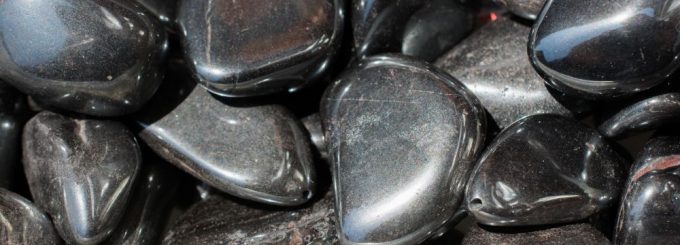Gemstone Spotlight: Hematite

Hematite is without a doubt one of the world’s most versatile gemstones. Aside from its usage in jewelry, it is also an ingredient in lipstick, oil paint, mascara and blush and industrial undercoats. This makes it extremely valuable.
Characteristics
When first dug out of the ground, hematite doesn’t look all that impressive. It is somewhat dull until sliced and polished after which it produces a lovely metallic shine. It contains a large amount of iron, which gives it considerable weight. The colors will vary but range from black to silver gray. Some specimens also display reddish streaks along the surface and the rarest stones contain iridescent rainbow sheen.
Hematite is considered mysterious to some geologists since it almost resembles silver, but the reddish streaks are a giveaway which results from iron oxide that is present within it. When hematite is grounded to become powder it will appear in the form of reddish dust. When cut by jewelers it will resemble shaped cabochons but might also be faceted. Hematite comes in four primary varieties, which are iron rose, specularite, kidney ore and rainbow hematite.
Iron rose consists of hematite flakes which have been arranged inside clusters which give it the appearance of rose petals. Specularite is hematite aggregate which contains mirror style layers and flakes. Kidney ore is named after its resemblance to the human kidney and the rainbow hematite is named for its multi-color display which results from the natural coating that comes from aluminum phosphate.
Shopping for Hematite
Despite its many uses, hematite is quite affordable and not too difficult to find. Some buyers prefer the black variant while others enjoy the silver one. Rainbow hematite is the most expensive and difficult to locate, especially if it is 100 percent natural. Stones which display a beautiful red streak will also command a premium.
While many people have never heard of hematite, it is one of the oldest stones used by man, going back as far as 200,000 years. It was prized by both the Denisovians and Neanderthals and was used as chalk in cave paintings. Because this gem is quite soft, it was simple to carve so the ancients fashioned it into cylinder seals and amulets both in Sumerian as well as the Ancient Egyptian civilizations. The Egyptians valued it so much that it has appeared in some of their tombs. During the Victorian Era in England the people would use the gray version as a stone of mourning.
How to Care for Hematite
Hematite has a Moh’s hardness rating of 6 to 7, which means that it’s soft enough to fashion into jewelry while being durable enough to stand the test of time. It can be purchased in the form of bracelets and rings, but may need extra protective settings. It should be stored individually away from others gems and should be cleansed with water that is warm and soapy. Avoid using chemicals or solvents.


